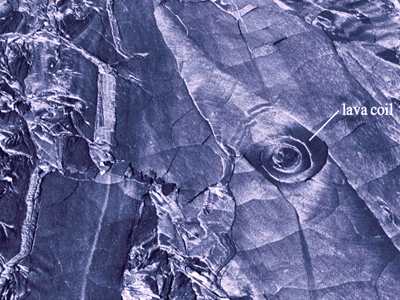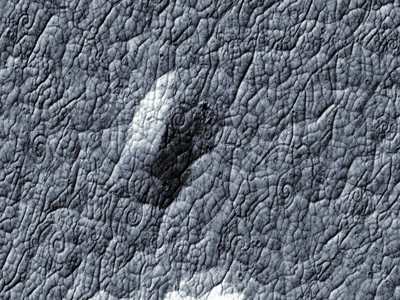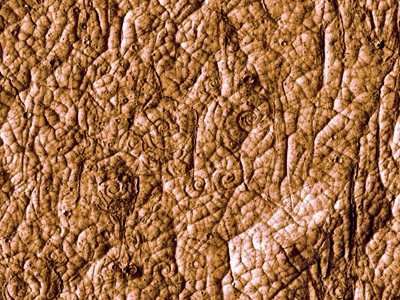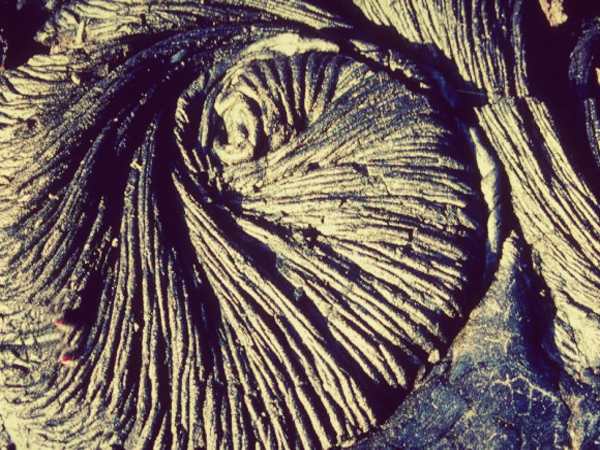In a groundbreaking discovery, scientists have unveiled a mysterious network of valleys on Mars, adorned with giant coils of lava that resemble alien artwork. This finding not only challenges our understanding of the Red Planet’s geological history but also opens up new possibilities for future exploration and the search for extraterrestrial life.
Unraveling the Martian Mystery
The Athabasca Valles region, located near Mars’ equator, has been a subject of debate among researchers for over a decade. Some believed that ice shaped these valleys, while others argued for the role of lava. Now, thanks to high-resolution images from NASA’s Mars Reconnaissance Orbiter, we have compelling evidence that fire, not ice, is the culprit behind this Martian wonder.

Andy Ryan, a planetary geologist at Arizona State University, made this remarkable discovery while examining images from the HiRISE (High Resolution Imaging Science Experiment) instrument. What he found were 269 spirals of lava, ranging from 16 to 98 feet wide, scattered across the Martian landscape.
A Volcanic Legacy
These lava coils, never before seen on any extraterrestrial body, provide crucial insights into Mars’ volcanic past. The Elysium volcanic province, where these spirals were found, tells a story of massive lava flows that once shaped the planet’s surface.
According to Ryan’s analysis, more than 5000 cubic kilometers of lava once pooled in the Cerberus Palus on Mars, forming a gigantic lava lake. As this molten rock cooled and was pulled in different directions, it created these mesmerizing spiral patterns, similar to those found in Hawaii and near the Galapagos Rift on Earth’s ocean floor.

Implications for Martian History
The discovery of these lava coils does more than just solve the mystery of the Athabasca Valles’ formation. It provides valuable clues about Mars’ geological timeline. The excellent preservation of these features and the lack of impact craters in the cooled lava suggest that this volcanic activity occurred relatively recently in Mars’ history.
This finding aligns with what we know about Mars’ volcanic potential. The planet is home to Olympus Mons, the largest known volcano in our solar system, towering at 16 miles high – about three times the height of Mount Everest.
Future Exploration and the Search for Life

While the last Martian eruption likely occurred millions of years ago, this discovery reignites interest in Mars’ volcanic history and its potential impact on the search for life. Volcanic activity can create environments conducive to microbial life, making these lava-rich regions prime targets for future exploration missions.
As we continue to unravel the mysteries of our neighboring planet, each discovery brings us closer to understanding Mars’ past and its potential to harbor life. The lava coils of Athabasca Valles serve as a testament to the dynamic and ever-changing nature of planetary surfaces, reminding us that even in the cold expanse of space, the fire within can leave lasting marks of beauty and scientific significance.
The next time you gaze at the red dot in the night sky, remember that beneath its dusty exterior lies a world of hidden wonders, waiting to be discovered by the next generation of Martian explorers.

